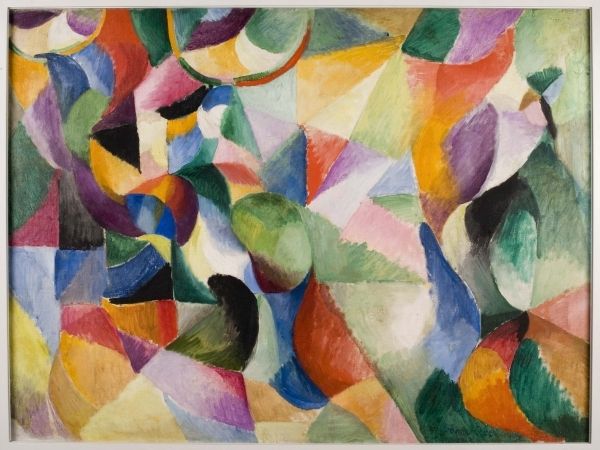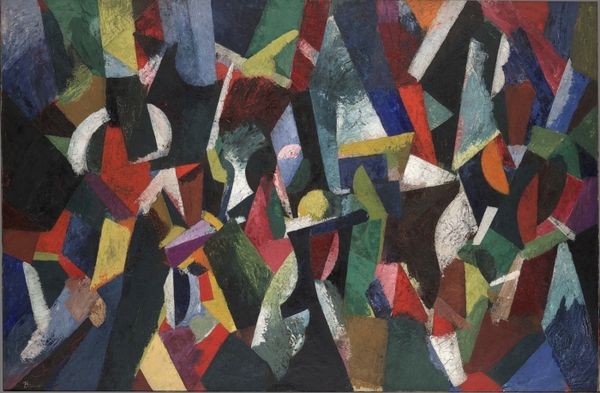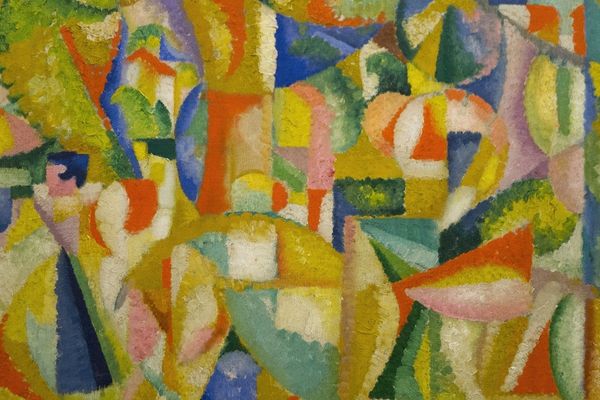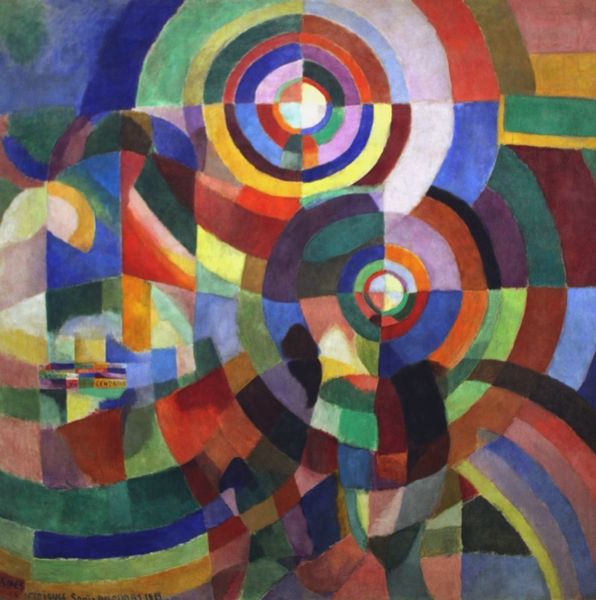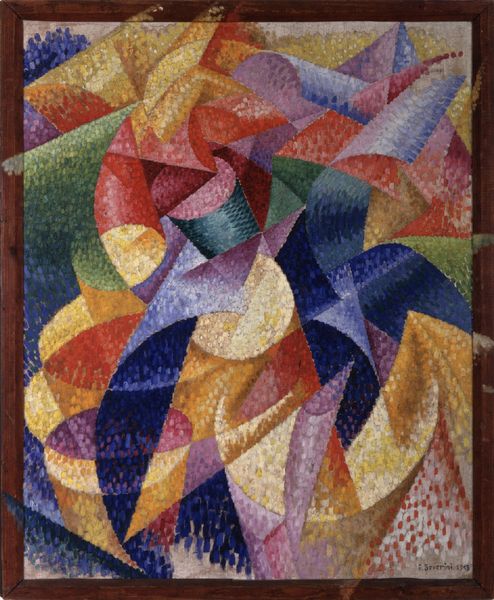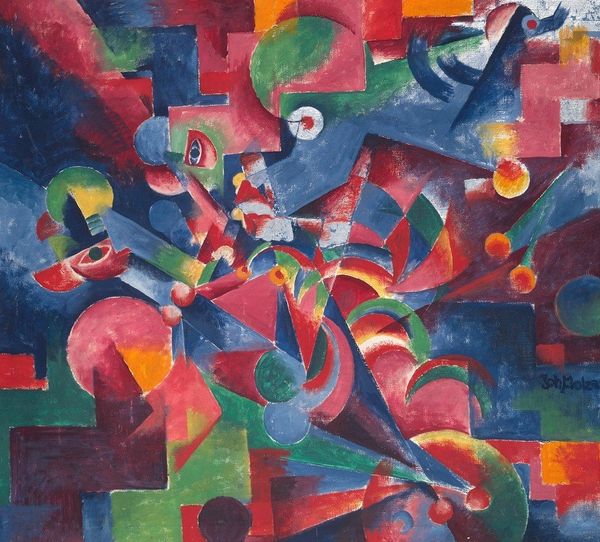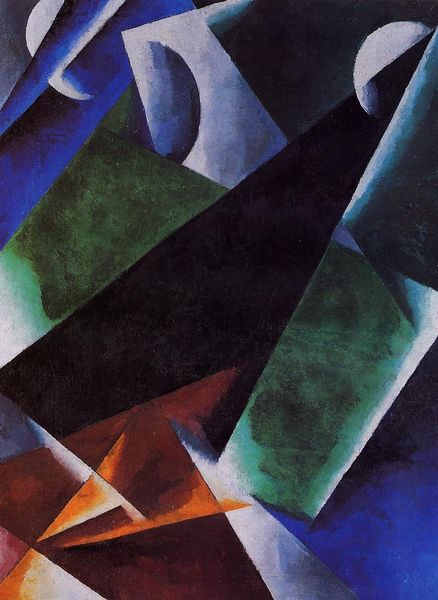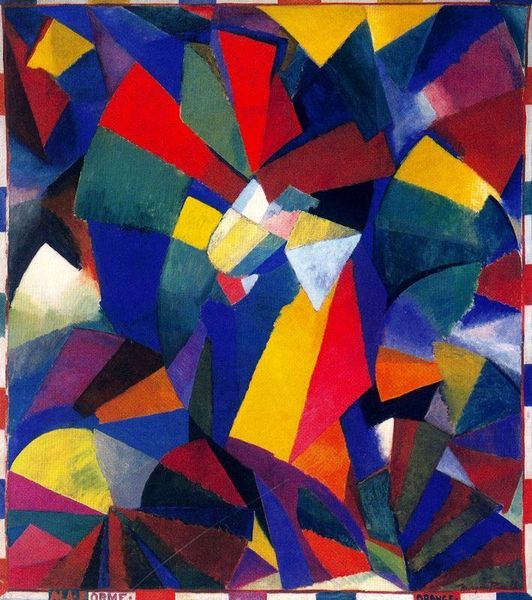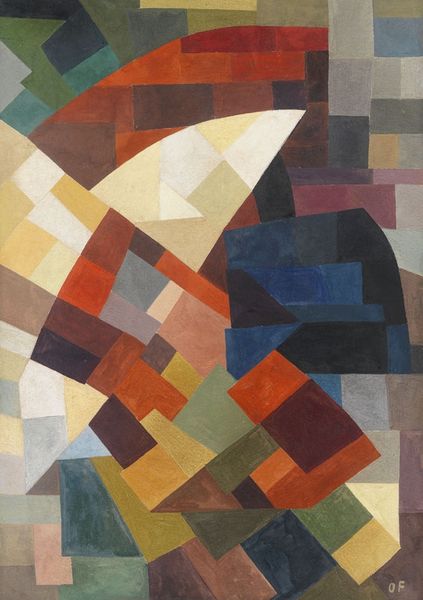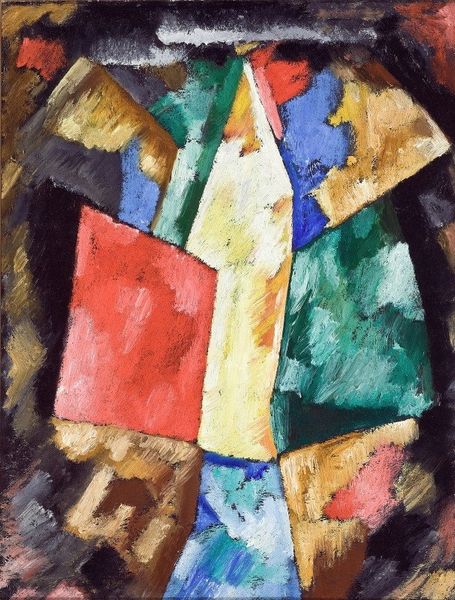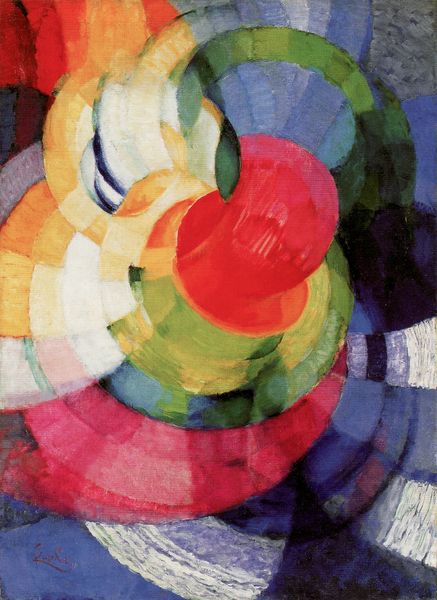
Copyright: Public domain
Editor: Here we have Robert Delaunay’s "Window," created in 1912 using oil paint. It strikes me as such a vibrant, almost musical arrangement of colors. What historical perspectives can you offer on its composition? Curator: It's fascinating to consider this work within the broader context of early 20th-century society. Think about it: the rapid industrialization, urbanization, and the burgeoning avant-garde art scene. Delaunay’s "Window" encapsulates a desire to break free from traditional representation. It emerged during the rise of abstraction in Paris. Do you notice how the fractured planes and juxtapositions of colors reject academic painting’s established styles and conventions? Editor: Yes, definitely. It's almost as if Delaunay is trying to show us not just what he sees through a window, but the very act of seeing itself. So, was this focus on perception common among artists at the time? Curator: Absolutely! Consider the burgeoning interest in optics and color theory. Artists like Delaunay felt driven to visually express modern life by rendering light, movement, and subjective perception through pure color and geometric form. These kinds of art challenged conventional power structures embedded within art institutions by proposing that abstract experience, not mimetic skill, can define a valuable artwork. To that end, where does Delaunay fit? Editor: That’s a really helpful perspective. Thinking about "Window" in terms of its social context, it becomes much more than just a pretty abstract picture. I’ll consider what I have learned about art and apply those perspectives when I make judgements about a new image. Curator: Indeed. Hopefully you understand its visual language a bit more now as well!
Comments
No comments
Be the first to comment and join the conversation on the ultimate creative platform.
